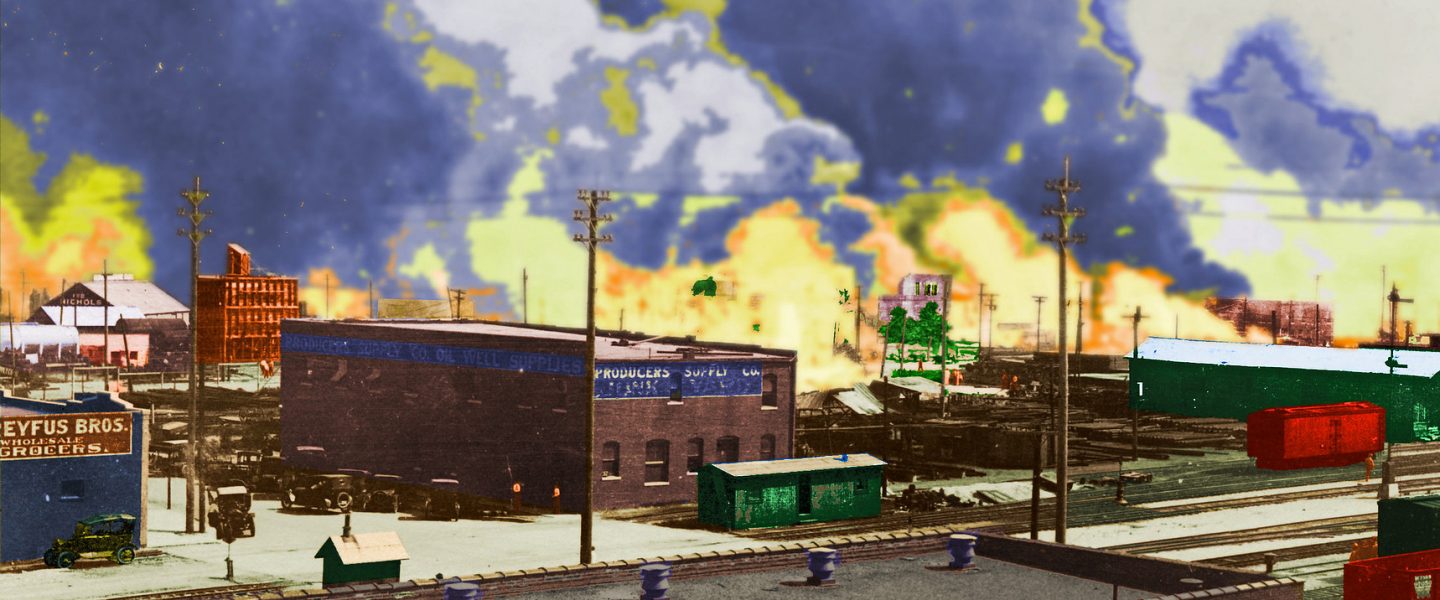Black Wall Street Before the Tulsa Race Massacre ; What Does Justice Look Like? ; and More Picks 6/1
PICKS are stories from many sources, selected by our editors or recommended by our readers because they are important, surprising, troubling, enlightening, inspiring, or amusing. They appear on our site and in our daily newsletter. Please send suggested articles, videos, podcasts, etc. to picks@whowhatwhy.org.
The Neighborhood Fighting Not to Be Forgotten (Bethany)
The author writes, “When Brenda Nails-Alford received the letter informing her that her ancestors were survivors of the 1921 Tulsa Race Massacre, she had to reread it five times. The massacre was a two-day onslaught of racial violence that is believed to have killed hundreds of people and laid waste to the prosperous Black neighborhood of Greenwood—which included a business district known as ‘Black Wall Street’ — in Tulsa, Nails-Alford’s hometown. She had never heard of it. In 2003, a legal team sued the city of Tulsa, the Tulsa Police Department, and the state of Oklahoma on behalf of more than 300 of the massacre’s survivors and survivors’ descendants. After their letter reached Nails-Alford, she drove to Greenwood and walked up and down the streets, just like she had as a kid. Her memories suddenly felt haunted.”
What We Lost In the Fire: Black Wall Street Before the Tulsa Race Massacre (Bethany)
From the Root: “There were Black men and women who built empires, only to have them stolen by white supremacist violence of Tulsa Race Massacre of 1921. What was destroyed in the domestic terrorism incident starting on May 31, 1921, can never be regained. But it was much more than just businesses and money. It impacted an entire race of people forever.”
100 Years After the Tulsa Massacre, What Does Justice Look Like? (Marin)
The author writes, “In 1921, a white mob attacked the Greenwood district of Tulsa, killing hundreds of Black people and destroying the neighborhood. Justice has never been served. Can it still be today?”
How Qualified Immunity Would Have Protected the Tulsa Mob (Marin)
The author writes, “Last week, the U.S. Supreme Court declined to hear yet another case in which lower courts shielded law enforcement officials from paying damages for violating the rights of suspects — in this case, the shooting death of a Black man whose only offense was sleeping in his car. The reason is qualified immunity, a doctrine that has been much in the news over the past year. I’ve long been an opponent of the judge-made doctrine, which protects government officials from most civil lawsuits for violating constitutional rights, unless the right in question is clearly established — meaning, as the Supreme Court explained in 2015, that ‘every reasonable official would have understood that what he is doing violates that right.’”
Skewed View of Tulsa Race Massacre Started on Day 1 With ‘The Story That Set Tulsa Ablaze’ (Dana)
The author writes, “The story was just five paragraphs long, placed at the bottom-right column of the front page. ‘Nab Negro for Attacking Girl in Elevator,’ read the attention-grabbing headline in the May 31, 1921, edition of the white-owned Tulsa Tribune. That was ‘The Story That Set Tulsa Ablaze,’ the Black-owned Black Dispatch would later declare. The deeply flawed story of an alleged assault attempt by a Black man of a white woman in an elevator has been credited by historians as helping to instigate a massacre that in less than 24 hours left an estimated hundreds of Black residents dead and destroyed 35 blocks of a prosperous Black enclave in one of the deadliest episodes of racial violence in American history.”
The Victory of Greenwood (Dan)
The author writes, “The story of Greenwood is not one of tragedy. The neighborhood has suffered systemic racism and tragic events, but these do not define Greenwood nor tell its complete story. Founded in Oklahoma in 1905, shortly before Oklahoma’s statehood, Greenwood became the wealthiest African-American community in the nation. A decade and a half later, in 1921, a white mob attacked Greenwood leaving it in ruins. Despite the despicable acts committed against Greenwood, now known as ‘The 1921 Tulsa Race Massacre,’ Greenwood rebuilt, even better than before, with no external aid. In fact, its residents overcame a deliberate attempt by the City of Tulsa to legally prevent them from rebuilding.”
What the Tulsa Race Massacre Destroyed (Marin)
From the New York Times: “For decades, what happened in Greenwood was willfully buried in history. Piecing together archival maps and photographs, with guidance from historians, The New York Times constructed a 3-D model of the Greenwood neighborhood as it was before the destruction. The Times also analyzed census data, city directories, newspaper articles, and survivor tapes and testimonies from that time to show the types of people who made up the neighborhood and contributed to its vibrancy.”
Organizers: Dispute Over Survivors Scrapped Tulsa Event (Dan)
The author writes, “Organizers who called off a headline commemoration of the 100th anniversary of the Tulsa Race Massacre said Friday the event was canceled after an agreement couldn’t be reached over monetary payments to three survivors of the deadly attack by a white mob, highlighting broader debates over reparations for racial injustice.”
‘Fire in Little Africa’ Explores 1921 Tulsa Race Riots (Bethany)
From the Miami Times: “A reverential and thought-provoking new collection of songs will commemorate the 100th anniversary of the Tulsa Race Massacre. ‘Fire in Little Africa’ – a groundbreaking album of original material written and recorded by a collective of Oklahoma hip-hop artists — will be released on May 28 by Motown Records/Black Forum, in partnership with Tulsa’s Bob Dylan Center and Woody Guthrie Center.”
15 Books to Help You Learn About the Tulsa Race Massacre (Dan)
From the Oklahoman: “The 1921 Tulsa Race Massacre was covered up for decades and omitted from history books even in Oklahoma, but … several new books — along with documentaries, visual arts exhibits, performing arts projects and more — are delving into the tragedy. From children’s picture books and historical fiction to in-depth histories and even a graphic novel, here are 15 books to check out about the Tulsa Race Massacre.”
3 Documentaries You Should Watch About the Tulsa Race Massacre (Dana)
From NPR: “Thanks to white-dominated power structures in the city of Tulsa and state of Oklahoma, news about the massacre was wiped from many official sources for decades (several fans of Watchmen and Lovecraft Country have told me they had never heard of the massacre before these fictional TV shows dramatized the attack during their episodes last year and in 2019). All that will likely change over the next week and beyond, as a flood of programs centered on the Tulsa Race Massacre come to television. From enterprise reporting efforts at ABC, CBS and NBC to projects on National Geographic, CNN, The History Channel and PBS, there are a wide array of documentary films and TV programs aimed at reminding Americans just how deadly unchecked racism can be.”



